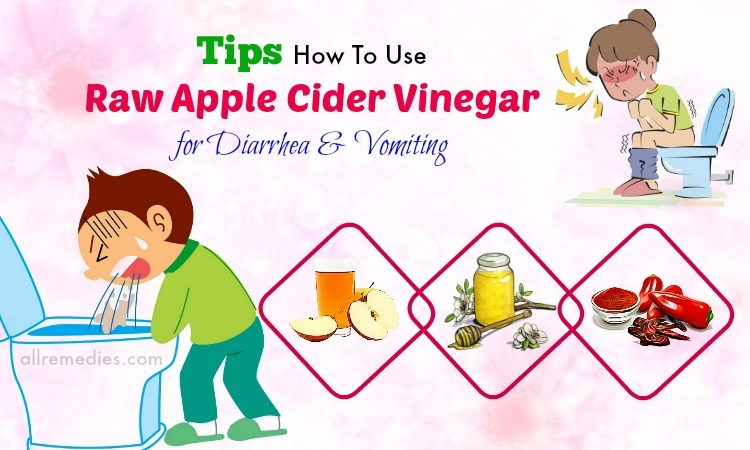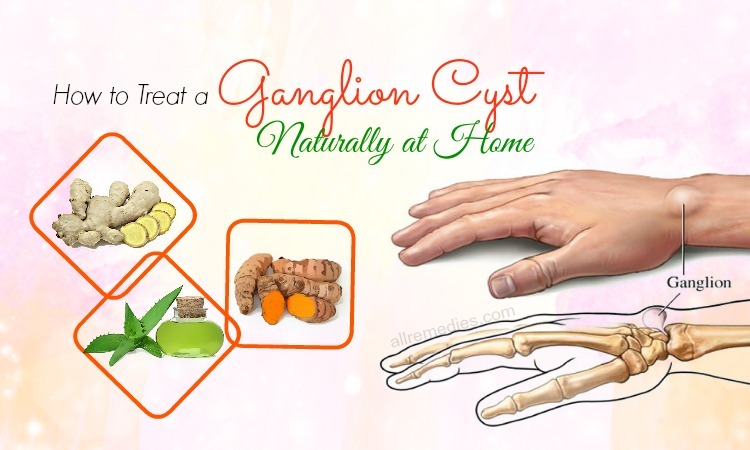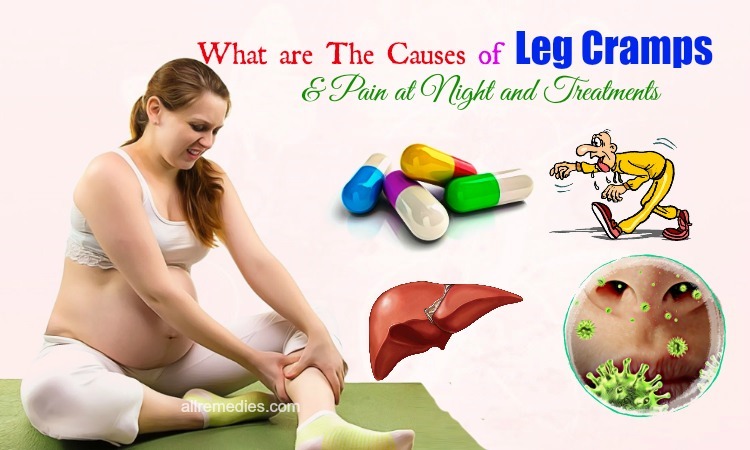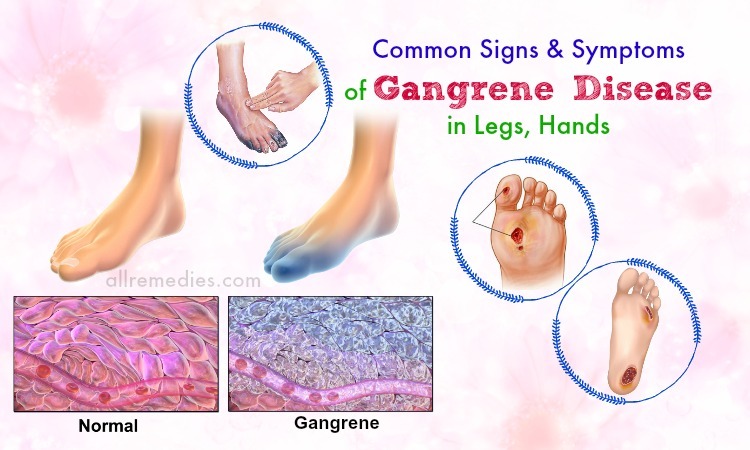
Medically reviewed by Dr Erica Steele, DNM, ND, CFMP, BCND
Top 6 Common Signs & Symptoms of Gangrene Disease in Legs, Hands
Updated: 11/27/2019
CONTENTS
Overview
As you can see, gangrene[1] is one of the most popular diseases which everybody may suffer from. And, this disease is also known as gangrenous necrosis which is one type of necrosis. It is usually caused by the critically insufficient blood supply. Furthermore, in order to recognize this disease in a normal way, it is very difficult because there are several types of gangrene, such as dry gangrene, wet gangrene, gas gangrene[2], internal gangrene, as well as necrotizing fasciitis. And do you know that? Each type of gangrene[3] has its own symptoms. Moreover, each person who is suffering from gangrene has different symptoms as well. So now, do you want to know what the symptoms of gangrene in legs & hands are? If your answer is yes, just keep reading this article on our page AllRemedies.com and find out the common symptoms that you may have if you suffer from any type of gangrene.
See also: 35 Foods To Increase Blood Platelets Count Instantly & Naturally
Top 6 Common Signs And Symptoms Of Gangrene Disease In Legs & Hands
1. Symptoms Of Gangrene – Dry Gangrene
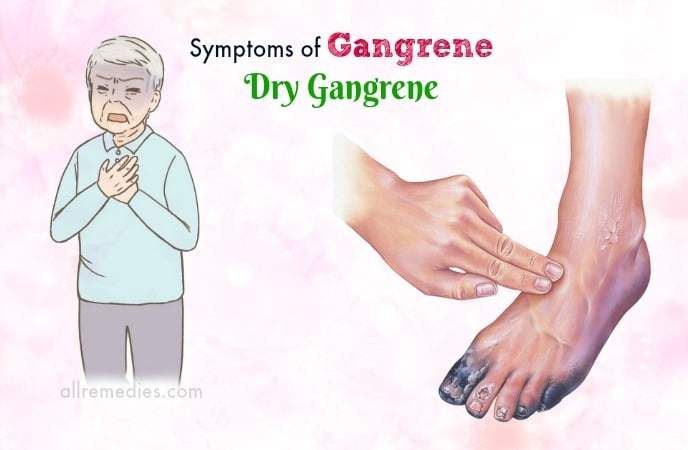
When talking about the common symptoms of gangrene, let’s begin finding out the common symptoms of dry gangrene first. But before discussing the symptoms of gangrene in legs & hands, in this case, there is one thing that you ought to know. That is dry gangrene usually influences someone’s hands as well as feet[4].
And people who suffer from diabetes or blood vessel disease or autoimmune diseases have more chances to suffer from dry gangrene. It grows when the blood flow to your affected area is damaged. In general, when someone suffers from dry gangrene, it is very easy to see the red line on the skin which can mark the edges of someone’s affected tissue. Furthermore, this area will become numb as well as cold. In case you suffer from dry gangrene, it may make you painful when this tissue dies. Nevertheless, a lot of people, especially the old people, can experience no sensations. In addition, the affected area of this tissue will change its color from red to brown or black. Then, the dead tissue in your body will curl up and separate from your healthy tissue, along with falling off.
Read more: 37 Best Natural Home Remedies for Diabetes Mellitus
AllRemedies Partner Solutions

Keep Asking Questions Until You Get The Answer You Need!
The Medical Experts are all here to answer your questions online or with a phone call.
2. Symptoms Of Wet Gangrene
Wet gangrene which is known as moist gangrene is also one of the main types of gangrene. When discussing the symptoms of gangrene, it also means that you ought to know the symptoms of wet gangrene. Absolutely, wet gangrene is different from dry gangrene. It almost involves an infection. Or in other words, the symptoms of wet gangrene and the symptoms of dry gangrene are not the same. Generally, the symptoms of this type of gangrene start with the affected area swelling as a reaction to underlying infection before your tissue begins to decay. If dry gangrene just makes you feel a little bit painful, you may have a totally different feeling when you are suffering from wet gangrene. It really makes you feel extremely painful. Moreover, if you suffer from wet gangrene, your skin will also change its color. It is from red to brown or black. And then, it manufactures foul-smelling pus. Besides that, as you suffer from wet gangrene, you also have some different symptoms. For example, you may have a high temperature or fever in an effort to fight the underlying infections. In this case, your temperature may be at 38oC or 100.4oF or may be higher. In addition, as soon as you suffer from wet gangrene[5], you may hear a crackling noise which comes from your affected area when it is pressed.
Get also: 24 Natural Home Remedies For Low Blood Sugar Level Treatment
3. Internal Gangrene – Symptoms Of Gangrene
If you suffer from gangrene, you can have chances to suffer from internal gangrene. This type of gangrene may influence your organs or your inner tissues. It is quite different from other types of gangrene because there are not any symptoms which are shown outside your body. But similarly to the other forms there is an underlying infection that has not been addressed. In this case, fever is the most popular symptoms. Furthermore, you may have serious pain. If you suffer from internal gangrene and your condition becomes worse and worse, it must be treated as soon as possible. Besides that, if you have some symptoms like sores or blisters which are not healing, discolored skin or skin which is hard, cold, pale and numb, along with a foul-smelling discharge from the sores, just go to the hospital and meet the professional doctor right now because it may threaten your life.
Read more: 31 Safe Home Remedies for Athlete’s Foot Blisters & Toenail Fungus
Top 10 Fast Ways How To Treat Poison Ivy Rash & Blisters At Home
4. Symptoms Of Gas Gangrene

Gas gangrene is usually rare, but it is really dangerous. It often happens when the infection develops deep inside your body like inside organs or muscles[6].
It is usually the result of trauma. If you suffer from gas gangrene, you may have some symptoms. For instance, your skin surface may have a normal appearance at first. Then it turns pale into gray color or purple-red color. Besides that, in almost all cases of gas gangrene, when you press your skin near your affected area, it will make a crackling noise which is caused by the gas produced by the underlying bacteria, as well as potential co infections. In some other cases, there is a watery discharge from your affected area. But this discharge is really different from the discharge of wet gangrene. It doesn’t contain a distinctive foul odor. One thing which you ought to know as well is that gas gangrene is very dangerous and life-threatening. So if you have the symptoms of gas gangrene, you ought to go to the hospital immediately in order to have a check.
See more: 29 Natural Home Remedies for Fever Blisters in Adults
5. Necrotizing Fasciitis
If you are looking for information about the symptoms of gangrene, you also need to know the symptoms of necrotizing fasciitis[7]
which is one of the main types of gangrene. This type of gangrene is able to affect any part of your body even though a lot of cases can develop in the extremities like your hands, arms, feet as well as legs; your perineum which is the skin area between your genitals and your anus; and your torso which is your central body part between your neck and your limbs. If you suffer from necrotizing fasciitis, you may feel painful. Furthermore, redness and swelling are the symptoms of necrotizing fasciitis as well. Likewise when the infection progresses; your skin may become tense and red increasingly. And you can easily see the edges of your affected area and your unaffected area. In some cases, after a lot of hours or days, the symptoms of this type of gangrene are becoming worse. Your skin will change its color to purple or black. Moreover, the serious blistering will also develop, and your affected area may make a crackling sound. For some people, they also experience the discharge of fluid which is usually described as looking like dishwater from their affected area.
Learn more: 12 Methods How To Get Rid Of Broken Capillaries On Face, Chin, & Nose
25 Tips How To Get Rid Of Bruises Fast On Face, Knees, Legs, Arms
6. Septic Shock
One of the main types of gangrene is the septic shock[8]. But normally, septic shock is known as a result of gangrene if bacteria from your infection get into your bloodstream. Additionally, the infection can affect a lot of systems in your body and may cause the blood pressure to decrease to dangerously low levels. In this case, shock exactly means low blood pressure. In general, septic shock is really life-threatening. Therefore, you or someone needs to go to the hospital immediately if you or someone suffering from septic shock. And just like other types of gangrene, septic shock also has its own symptoms. They include fast but weak pulse; clammy, pale and cold skin; lightheadedness[9];
shortness of breath as well as increased heart rate; diarrhea; vomiting; along with changing the mental status such as disorientation or confusion.
Find also: 29 Natural Home Remedies for Diarrhea in Adults
26 Natural Home Remedies for Vomiting in Adults & Children
Conclusion
In conclusion, there are six main types of gangrene, such as dry gangrene, wet gangrene, gas gangrene, internal gangrene, septic shock as well as necrotizing fasciitis. And each type has its own symptoms. Even though you are suffering from any type of gangrene and have one of these symptoms of gangrene in legs & hands which are mentioned above, you ought to go to the hospital and have a medical checkup so that you can find the best treatment for your situation. If you notice that you have one of these symptoms of gangrene and you pretend not to see it, you may have a risk of threatening your life. Or in other words, your parts of the body may die.
Furthermore, after you read this article on our main page How to, we all hope that it can help you to broaden your knowledge about this serious disease. In case you have any questions or you know more information about the symptoms of gangrene, please do not hesitate to let us know by leaving us a comment or a message below. We promise that we will respond to your comment or your message as soon as we can.

GET FREE ACCESS!
Lorem Ipsum has been the industry's standard dummy text ever since the 1500s, when an unknown printer took a galley of type and scrambled it to make a type specimen book. It has survived not only five centuries
Also on
- Top 6 DIY Weight Loss Drink Recipes for Breakfast and Dinner
- Top 7 Trusted Home Remedies For Breast Enlargement
- 19 Ways How To Treat A Ganglion Cyst Naturally At Home
- 6 Best Ways on How to Lose Weight in a Week with Water and Drinks
- 30 Best Natural Home Remedies for Diabetes Mellitus: Causes, Symptoms, And Treatments
JOIN THE CONVERSATION
